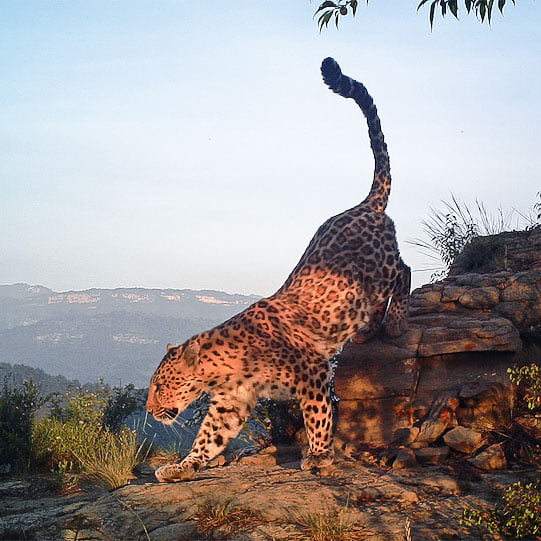Yes, leopards live in China. If you look at an historical map of the distribution of the leopard you will see that they occupied almost the entirety of China (2002). In fact the leopard probably still has the greatest geographic distribution of any wild cat species. However, although the experts seem to have divided up the leopard into nine or less subspecies in China (the taxonomy of the wild cat species is problematic even today), its life there is endangered. The usual reasons probably apply such as persecution by humans together with a loss of habitat and prey. The same sort of story applies to the tiger in China. Opinion: China appears not to be a greatest place to live if you are a large wild cat species because the authorities in that country don’t seem to be that good at conservation without being impolite.

However, there is good news on the Internet today as it happens. The media says that rare leopards have been reappearing in habitats near Beijing, the capital of China. This subspecies is referred to as the “North China leopard”. They are on the edge of extinction but have been seen in their traditional mountainous habitats for what appears to be the first time in two decades.
In the second half of the 20th century illegal hunting and deforestation reduced their numbers sharply to 500 at 2008. Their habitat had been reduced by 80%. There have been improvements in conservation and since 2012 this rare species of large wild cat has been repeatedly seen in Hebei Province. On August 20, 2020 a North China leopard was seen in Hebei Tuoliang National Nature Reserve according to reports of the Chinese Felid Conservation Alliance (CFCA).
Twenty years ago, these big cats almost vanished in the mountains near Beijing. Now they have found their way back. This is really good news.- Song Dazhao, former chairman of the CFCA.
The main reason for the good news is an expansion in the forest thanks to a project started in 1994. The forest has been expanded to 7.5 million ha with the doubling of forest cover as I understand it. This has improved the “living environment of the North China leopards and has reduced the impact of human activities on them”.
The government of Heshun (a county in Shanxi) has implemented a compensation scheme for farmers for livestock killed by leopards. They receive 1,000 to 2,000 yuan ($150-$300) for each animal killed. This amounts to partial compensation. It appears too that the local government has helped to reduce fragmentation of habitat by building pathways between areas where they exist and modified the routes of road projects to minimise the impact on their habitat.
The impression I get is that the authorities are making more effort nowadays than before in conservation.
However, industrial development and construction are still threats to the habitat of the leopard. And there is still human-leopard conflicts over livestock in mountainous territories. A video clip from May 17 showed the dead body of leopard by the side of a road in the mountains in China’s eastern Shanxi province. It went viral. After decades of their absence people were surprised to see this. The leopard was judged to be a subadult male seeking territory. In Heshun county an elderly woman who was looking for missing livestock in the mountains near her village saw three leopards who had apparently eaten her two calves. They had caused trouble before and this is clearly an example of the conflict between farmers and leopards in the region.
The North China leopard lives mainly in the Taihang Mountains. The range extends 250 miles along the border between the eastern provinces of Shanxi and Hebei. They are also found occasionally in and around western Sichuan Province. The species is doing badly in China but these are hopeful signs. According to the IUCN Red List in 2015 leopard populations had been “dramatically reduced due to continued persecution with increased human populations, increased illegal wildlife trade, excessive harvesting for ceremonial use of skins, pray base declines and poorly managed trophy hunting”.
A lack of research means that we don’t know the population size of the North China leopard. An estimate in 2015 indicated that there were 348 in the wild. This was a dramatic decline from an estimated 1,000 in 1998. The estimates may be inaccurate however. I am sure that a similar picture pertains to the other subspecies of leopard in China.

